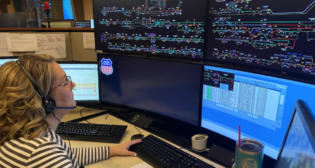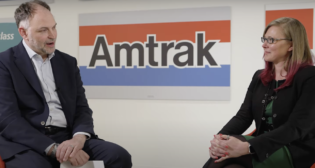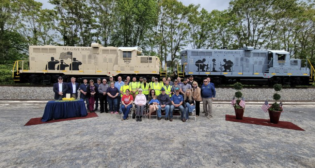Commentary
Data-phobic FRA’s “Book of Mormon”
Written by
Frank N. Wilner, Capitol Hill Contributing Editor
Rail labor’s sabots are showing. It’s not a pleasant sight. “Sabots”—French for wooden shoes and the etymological root of “sabotage”—were thrown into the gears of textile looms by 15th century workers in failed hopes of thwarting technology.
Rail labor is engaged in a modern-day sabots-throwing exercise to preserve conductor jobs likely unnecessary for safe-train operation as collision-avoidance technology named Positive Train Control (PTC) is installed.
Troublingly, rail labor has recruited the Federal Railroad Administration (FRA) as a compliant time traveler to decades past when redundant train crews of up to seven sent the industry tumbling into a financial abyss. Job security could have been—but wasn’t—softened by interest-based bargaining where each side works to meet the other’s concerns. Welcome to déjà vu.
PTC is a more-than $12 billion investment to eliminate human-factor-caused train accidents. Rail labor long has advocated its development and implementation. But as with previous technological advancements—semi-automatic couplers, air brakes, diesel-electric locomotives, end-of-train devices, and remote-control beltpacks—some jobs become redundant. Rather than acknowledge technology’s merit in improving safety, rail labor has recruited the FRA to assert, without data-determined scientific evidence, that safe train operation requires a minimum of two crew members.
Well, not on all trains, and here is where arguments of the labor/FRA cabal become dodgy.
A former president of the Brotherhood of Locomotive Engineers and Trainmen (BLET) predicted in 1985 that technology would permit engineer-only operations. On the Northeast Corridor, Amtrak’s high-speed Acela Express trains operate with a lone engineer in the cab, as do Amtrak and commuter trains virtually everywhere else—and most under collectively bargained labor contracts. Some 80 smaller railroads operate engineer-only. The safety records are outstanding.
In 2001, the BLET negotiated engineer-only on Indiana Rail Road (INRD), and more recently stated willingness for engineer-only on a division of Class I BNSF. INRD President Tom Hoback traveled to the U.K. and New Zealand where one-person unionized crews are common. “Engineers said they had fewer distractions working alone,” Hoback says. “It has never been a contentious issue in INRD contract talks.”
In 2009, the FRA said it had “no factual evidence to support [a] prohibition against one-person crew operations.” The California Public Utilities Commission concluded a two-person crew “could aggravate engineer distraction,” while the National Transportation Safety Board does not oppose phasing out two-person crews as other safety enhancements, such as PTC, are implemented.
Yet in April, the FRA, at the urging of labor, said it would promulgate a rule requiring two-person crews. Privately, some at FRA disparage the agency’s effort as “the Book of Mormon,” saying FRA lacks data, and its arguments are ubiquitous with the term, “we believe.”
Despite carrier assurances they would not attempt to expand engineer-only operations prior to implementation of PTC—allowing time to examine post-PTC-implementation safety data—the FRA says recent crude oil by rail (CBR) accidents require prompt regulatory action to prohibit engineer-only operation. Seriously?
Of 15 CBR accidents in the United States, all resulted from rail flaws. And while the horrific July 2013 Lac-Megantic, Que., accident allegedly resulted from failure to apply sufficient hand brakes to hold a train following loss of air brakes—not then required under Canadian regulations—such a regulatory requirement has long been in force in the U.S.
With U.S. CBR accidents traceable entirely to rail flaws, the data-phobic FRA’s motive in requiring two-person crews is highly suspect, and diverts scarce resources that should be focused elsewhere.
Regulatory actions should be data driven. Yet when a carrier official suggested a data-driven approach, an FRA official responded—according to FRA-prepared meeting minutes—“What would be the objective of this exercise?” That the FRA administrator is a former union officer legitimately adds to anxieties.
Congressional oversight may soon probe what really is going on, and surely if the FRA proceeds, a federal court challenge, accompanied by extensive pre-trial discovery, will focus sunlight. Clearly not the FRA’s finest hour, this may well be its nadir.




